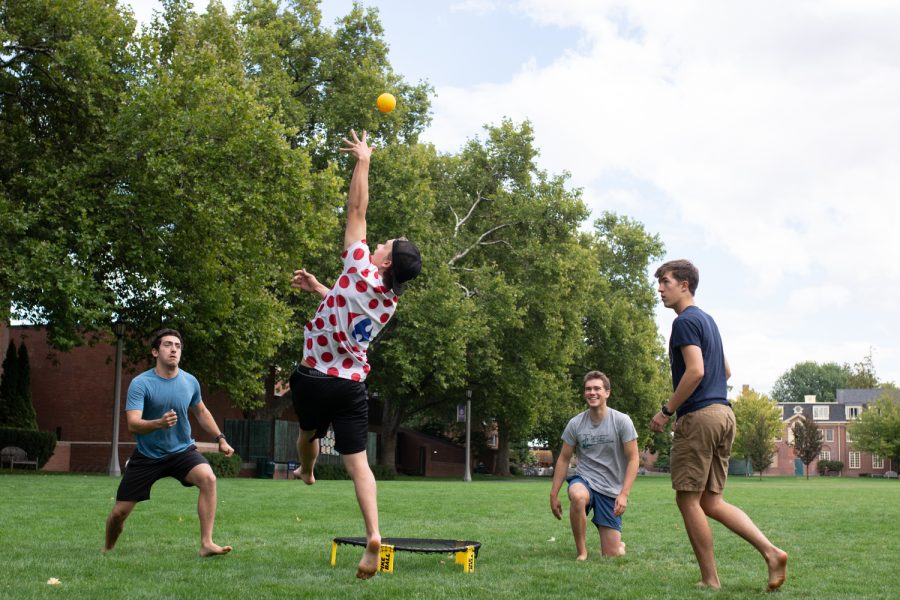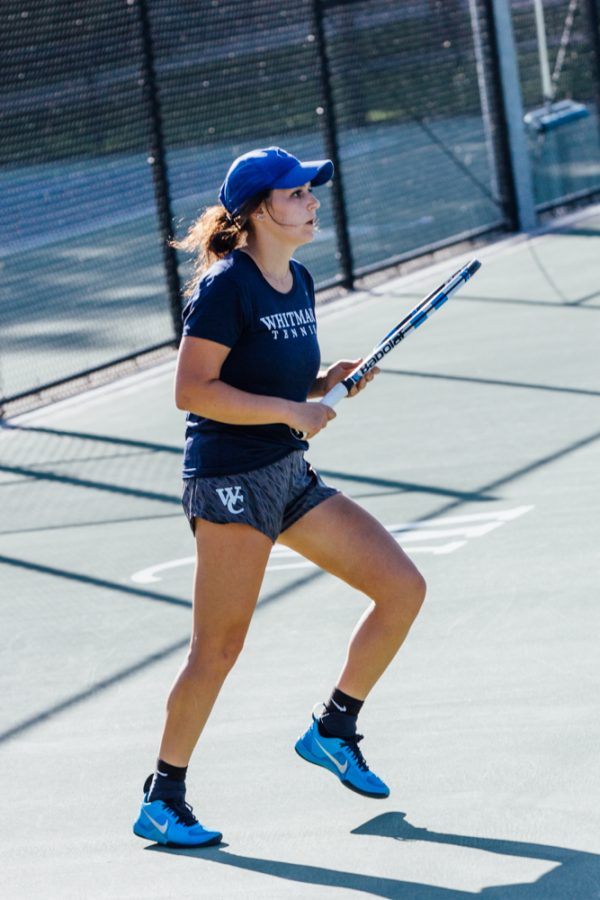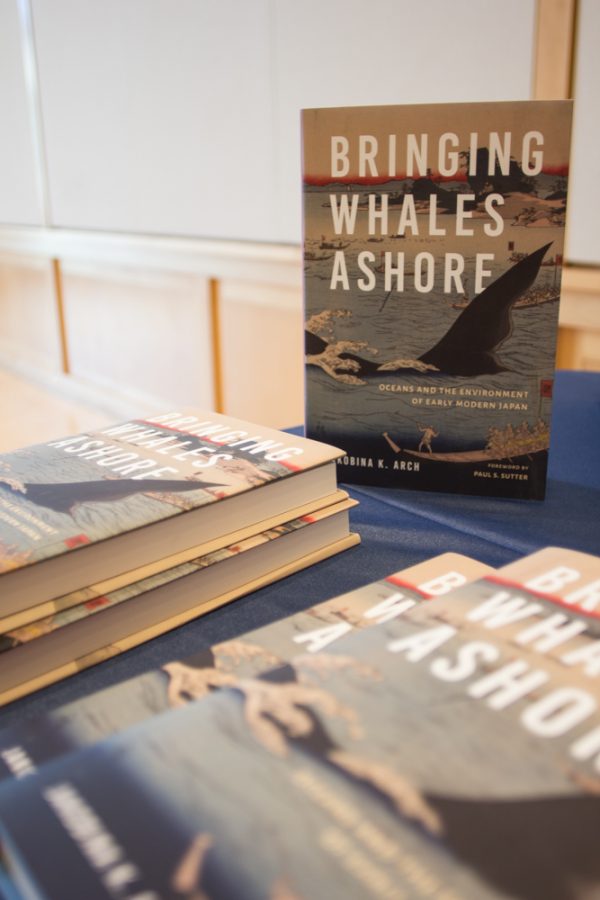At this point, I’ve settled into my host family’s home: at least a little bit. Orientation week is over, and tomorrow, classes start. I’m going to have to accept that there will come a time, most likely sooner rather than alter, when I won’t be able to share everything I experience, but at the moment, I’ll stubbornly refuse to accept that fact.
On Thursday, after attending an AKP orientation session on homestay tips, we had commuting practice. Each AKP student was paired with one or two Japanese Doshisha students, who were our guides and helpers for the rest of the day. The first stop was lunch, naturally, but after that, it was down to the nearby é§â€¦ (eki –– “station”) to practice our commutes from Doshisha home.
Did I mention that the Doshisha students spoke mainly Japanese?
It was unbelievably good practice in both speaking and listening to spend the entire afternoon talking to my Doshisha guides. Speaking Japanese with them was probably the first time I’d spoken extensively in Japanese for months, and although I spoke slowly and haltingly, they were kind enough to help me out and even compliment my broken Japanese. The day was not without difficulty, but at the end, I felt like a) I had a grasp on the major important points, and b) I had understood maybe a third of what else had been said. It’s not great, and I’ll hopefully improve so that eventually I’m closer to understanding, say, 85% or more, but it was an okay start.
So we began with a practice commute. My host family’s home in Uji is about 35 minutes by train from Doshisha (including one transfer), and then a ten-minute walk. There are three other AKP students that live in the general area, and we kept running into each other throughout the day. I was nervous beyond belief to see my host family’s house and potentially meet them for the first time, so when my host father answered the door and offered to drive us to our next stop, the local ward office (saving us a fair bit of walking and train-riding), I was conspicuously quiet the whole drive (although when given the opportunity, I thanked him profusely for his generosity).
Walking down the street from the é§â€¦ to my family’s house was another completely new experience. Everything: everything: from the street size to the building architecture to the cars to the sounds: it was all totally foreign. Once we had gotten away from the é§â€¦, traffic quieted down, which meant that as we walked, we could hear the buzz of the cicadas, the sound of heat. Cars passed us (driving on the left side of the street, of course) as we walked by a field where bushes of tea were growing. Houses in this neighborhood are closer together than most American houses; not only are next-door neighbors very close, but since the streets are narrow, your neighbors across the street are close, and the nearby block isn’t far away either. It’s densely-packed, yet doesn’t feel claustrophobic. It’s just different, and new, and as the three of us walked that street, listening to the song of cicadas and the clop of our sneakers on the pavement, I was swept away by the novel beauty of it all, again reminded how far away I was from home.
At the ward office, my tasks were to register as a Ã¥¤-国人 (gaikokujin –– “foreigner”) living in the country, and sign up for 国ä¿ (kokuho –– “National Health Insurance”). This is where my Doshisha friends truly shone. They guided me through the entire bureaucratic process, speaking to clerks on my behalf and indicating to me not only what forms I needed, but what I needed to write on them. I was able enough to fill the forms out myself, but given the extraordinary amount of kind assistance they showed me, I would not be surprised if, had I spontaneously become miserably inept, they would have filled the forms for me. It was a long wait in a quiet building: during the duration of which my homestay father waited patiently on a nearby bench: but the process was made so much easier with my Doshisha friends’ help and company. At the end, we managed to complete both tasks, getting me registered as a Ã¥¤-国人 and signing me up for 国ä¿ within an hour and a half, and we were walking out of the office as other AKP students were just trickling in.
The last task of the day on Thursday was to get me a commuting pass, another situation where my Doshisha friends served an invaluable purpose. It was admittedly less daunting to fill out the postcard-sized commuting pass form than it was to register at the ward office, but the process was once again made simple due to their help.
After that, they kindly walked me to my hotel (which was right nearby, since we were at Kyoto Station). We exchanged contact information, and then it was me on my own for a while.
(Interesting aside: The Kyoto Tower Hotel does something great with room keys that I’ve never seen done in America. Instead of giving each guest a room key that they can misplace at their own convenience, there is only one key for each room. When checking in, guests receive little cards saying what room they’re staying in. When you leave the hotel, you return the key to the front desk for safekeeping, and when you return, you need only present your information card, and they give you the key. This way, you don’t have to worry about the possibility of losing your key, because if you’re ever not in the hotel, your key is at the front desk. It’s brilliant!)
With time to kill, I spent an hour or so wandering around the neighborhood around the Kyoto Tower hotel. The sun began to set as I walked, so I was able to snatch quite a few pictures during “golden time.” Although I might not eagerly take a picture of a Kyoto street in broad daylight, as the sun begins to set, the long shadows and the golden cast make for absolutely fantastic photos. As I would later tell Sam, taking pictures with my camera: which can automatically make HDR (high dynamic range) images: during sunset almost felt like cheating, since it was so easy to get satisfactory results. I definitely looked like a tourist, wandering around with a camera, eagerly taking pictures of new things, but, as I told myself, I could afford to seem like a tourist for at least a little while longer.
The following day marked the end of orientation. We began the day by traveling up to the top of the Kyoto Tower, where an observatory allowed us a 360-degree view of the city. On each pane of the glass bubble we were observing from, clear vinyl stickers pointed out the landmarks you could see from that window. As I walked around the observation deck, I realized that there were such stickers on practically every window. In every direction, there was a shrine, a temple, a garden, an historic neighborhood, or some other point of interest, all no more than a short train ride away.
Our next stop for the day was Doshisha, where Doshisha students led us on a campus tour. Following that, we had a few more hours to spare before we had to dress up and meet our host families at the AKP welcome party, so a handful of AKP students and I decided it was time to brave the linguistic perils of the cell phone store.
It was an adventure, to say the least.
To start, a passport was required for foreigners applying for these phones, which I had left: wisely, I thought: in my hotel room. The store was in Kyoto Station, so it was not far from the hotel, but it meant that while the AKP students were piling up in the small, two-person Softbank store, I had to take five or ten minutes and fetch my documents. When I got back, there were even more people than when I had left: all Ã¥¤-人 (gaijin –– “foreigners”) trying their hardest to understand the Japanese instructions being given to them by the two Softbank employees. One of our number, Kristin, was kind enough to flex her extensive Japanese skills and write a step-by-step guide to the process in English, but it was still a slow and bumpy process.
Since I showed up late, I was last in line out of the AKP students, which meant by the time my turn rolled around, the clock was ticking. It didn’t help that there were other Japanese customers waiting in line behind me. I made conversation as I was waiting with a couple of Indonesian women who spoke Japanese as well as English, and I tried to apologize profusely to everyone who was being delayed, but I felt anxious and guilty for holding everyone up, despite the fact that they patiently waited in line. Between the pressure of the people behind me and the schedule I had to keep, when my phone was finally activated and I had thanked everyone sincerely, I shot out of the store like a cork from a bottle. I ran upstairs in the hotel, threw my dress clothes on in the men’s washroom, and rushed my luggage into the storage room before I took a moment to breathe and relax.
Before I knew it, my host family had arrived. Although I was nervous at first, that feeling waned throughout the party as I came to recognize my host mother’s infectious good spirit and warm nature. Her hand holding my arm, she walked me around the party as she said hello to friends and introduced me. In the vast round banquet hall, we listened to representatives from AKP, Doshisha, the US Consulate, and CASIO speak, and ate delicious catered food until we could barely walk. Nobody was completely comfortable: after all, it was the first time meeting our host families: but many of our worries melted away as we recognized how excited and eager our host families were to meet us.
And then, as quickly as it had started, the party ended. We left the banquet hall and grabbed our bags, then my host family and I made our way to the train station. For the second time, I watched the towering skyscrapers of central Kyoto fade away as we went further out to Uji: certainly not a rural town, by any means, but a smaller, quieter part of the city. From our train station, Iseda Station, it was a ten-minute walk, punctuated by mirthful conversation, and then we turned the corner, walked down a few houses, and arrived. “Aya,” a nameplate on the mailbox read in Japanese kanji, and the next day, my host parents would have me add my name in English to that display.
It was time to discover a new home.
More of my stories from abroad, as well as photos and other goodies, can be found at my travel blog, Experiencing the Seasons.




